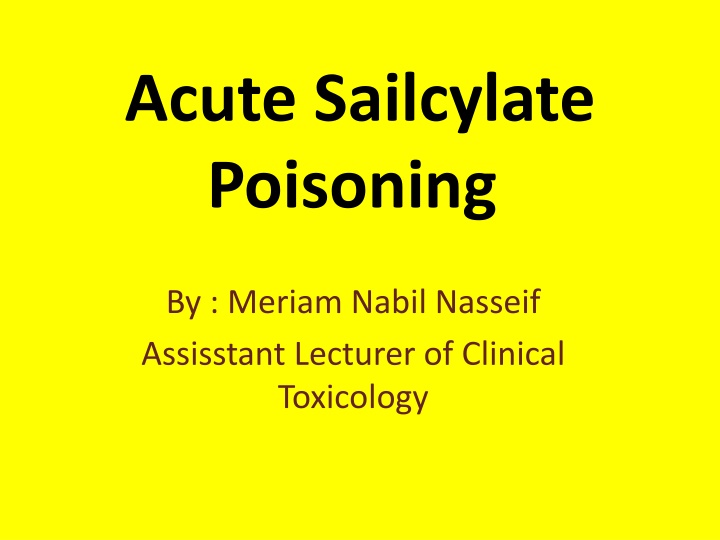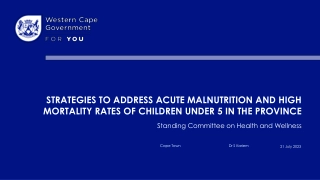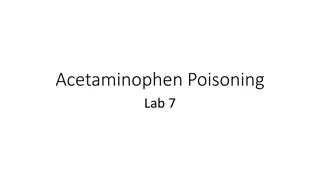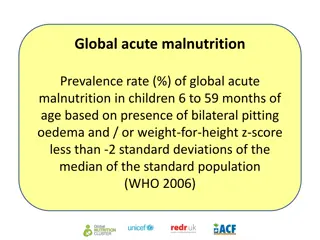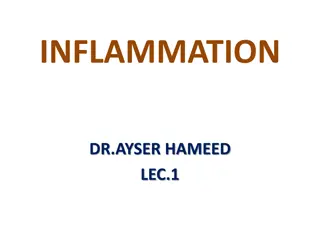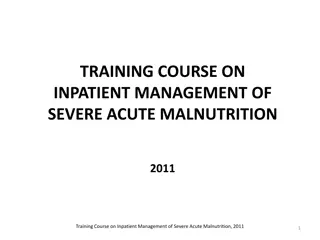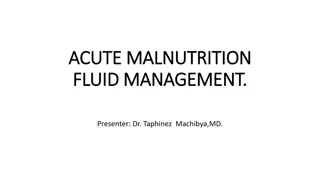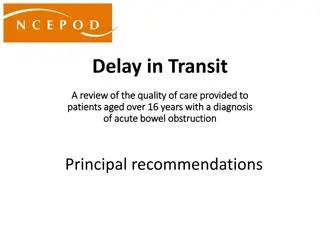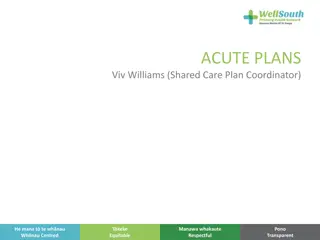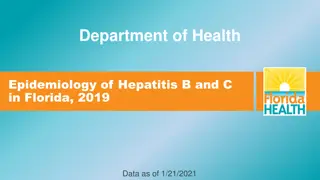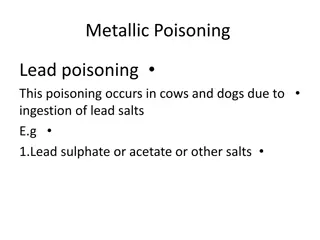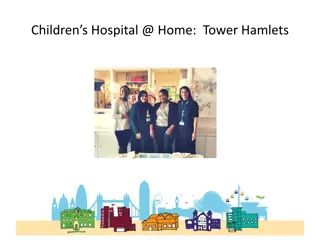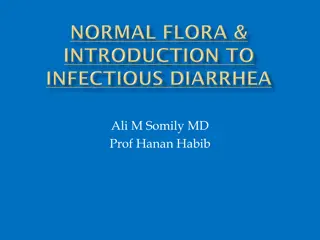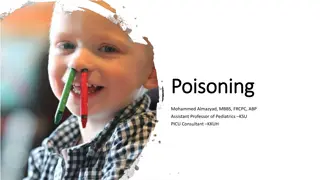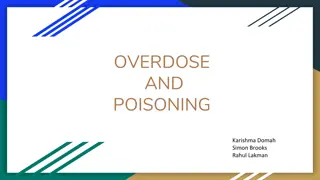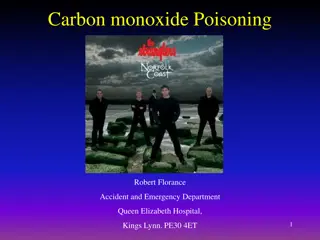Acute Sailcylate Poisoning
Acute salicylate poisoning can result from various medications containing salicylates like aspirin and methyl salicylate. This poisoning can lead to serious complications due to its pharmacokinetics, pharmacodynamics, and conditions of poisoning. It is essential to recognize the signs and symptoms of salicylate poisoning promptly to provide appropriate treatment and prevent fatal outcomes.
Download Presentation

Please find below an Image/Link to download the presentation.
The content on the website is provided AS IS for your information and personal use only. It may not be sold, licensed, or shared on other websites without obtaining consent from the author.If you encounter any issues during the download, it is possible that the publisher has removed the file from their server.
You are allowed to download the files provided on this website for personal or commercial use, subject to the condition that they are used lawfully. All files are the property of their respective owners.
The content on the website is provided AS IS for your information and personal use only. It may not be sold, licensed, or shared on other websites without obtaining consent from the author.
E N D
Presentation Transcript
Acute Sailcylate Poisoning By : Meriam Nabil Nasseif Assisstant Lecturer of Clinical Toxicology
Uses & available preparations: Salicylates are widely used asan analgesic, antipyretic and anti-inflammatory. 1. Aspirin and Rivo: One tablet contains 325 650mg acetylsalicylic acid. 2. Cold preparations 3. Methyl salicylate "oil of wintergreen" (topical keratolytic): One teaspoon of concentrated oil of wintergreen contains 5 g of methyl salicylate, equivalent to about 7.5 g acetylsalicylic acid. 4. Bisthmus salicylate: antidiarrhea
Pharmacokinetic&toxikinetics: -Ingested salicylate is rapidly absorbed from upper GIT, while overdose may produce pylorospasm leading to delayed absorption, concretions and enteric coated also delay absorption. -low molecular weight & water soluble (favor hemodialysis) -Peak plasma concentration is reached within 30 m -low volume of distribution 0.2L/kg but can be increased by acidemia. Acidosis decrease sailcylate ionization and increase its tissue precipitation ( more tissue damage).
Pharmacokinetic&toxikinetics: -High plasma protein binding 80-90% -metabolism in liver with conjugation with glycine and glucuronic acid -excreted by kidney (depend on urine PH). -The elimination half-life is 2 5 hours but 20 hours after overdose (zero order kinetics)
Pharmacodynamics -Anti-inflammatory: -Inhibition of PG synthesis by inhibition of cyclo- oxygenase pathway. -inhibition of migration of PMNs, leucocytes and other inflammatory cells to the site of infection. -inhibition of adhesion of granulocytes to the damaged blood vessel - inhibit kallikrin system
Pharmacodynamics -Analgesic: due to anti-inflammatory action -inhibition of pain perception at sub cortical level Anti pyretic: -inhibition of PG -vasodilatation of superficial blood vessels increase heat loss Anti-platelet: -reset hypothalamic thermal control Antipyretic -inhibit thromboxane A2 which accelerate platelets aggregation Hypoprothrombinemia : -Decrease liver uptake of vitamin K
Conditions of poisoning: Mode of poisoning: 1. Accidental: common in children 2. Suicidal: common in young adolescents. 3. Homicidal: rare due to large fatal dose Fatal dose: 390 mg/Kg (i.e. 60- 70 tab.) Cause of death : central asphxia in stage of depression Fatal period:24 hour
Clinical presentation 1. GIT & hepatic manifestation: a. Burning pain in mouth and throat. b. Nausea and vomiting c. Gastric ulceration leading to GIT bleeding 'hematemesis'. d. hepatotoxicity similar to Rye's syndrome (Occur in children following manifested by nausea, vomiting, hypoglycemia, elevated infiltration of liver and coma) viral infection liver enzymes, fatty
Clinical presentation 2. CNS: Salicylates first stimulate and then depress the CNS: a. Restlessness, excitability, agitation and convulsions ( occur with hypoglyemia, causes brain edema) b. Coma in severe cases. 3. CVS: a. Hypotension, collapse and tachycardia. b. Noncardiogenic pulmonary edema (increase capillary permeability). 4. Hematology: bleeding tendencies due to: a. Inhibition of prothrombin synthesis ( prothrombin time). b. Inhibition of platelet functions& decrease platelets adhesion ( bleeding time). c. Decrease factorsII, VII, IX and X(vit K dependent factors) d. Increase capillary fragility.
Clinical presentation 5. Hypersensitivity reactions (Allergy): a. Urticaria and skin rash. b. Precipitation of bronchial asthma. c. Angioneurotic edema. 6. Hearing: Salicylism - Tinnitus and deafness duo to 8th cranial nerve involvement and increase membrane permeability as inhibition of cyclo-oxgenase and decrease in PGs that interfer with Na K Atpase pump in stria- vascularis vasoconstriction decrease cochlear blood flow change membrane permeability loss of outer hair cell of organ of corti decrease autocaustic emissions
Clinical presentation 7. Kidney: Renal impairment due to: a. Direct effect of aspirin renal tubular necrosis uremia. b. Indirect effect due to decreased renal perfusion from dehydration. 8. Fluid and electrolyte disturbances: - Dehydration due to: a. Increased metabolic rate and hyperthermia. b. Vomiting, sweating and hyperventilation - Hypokalemia: due to vomiting, urinary loss. 9. Metabolic disturbances: -Short lived hyperglycemia then hypoglycemia due to increase metabolism and increase insulin secretion.
Clinical presentation Hyperthermia (hyperpyrexia): due to: a. Uncoupling of oxidative phosphorylation. b. Impairment of body cooling mechanisms. c. Dehydration due to loss of fluids by sweating and vomiting 10.
Clinical presentation 11. Acid-base disturbances: Respiratory alkalosis: The predominant early acid-base disturbance - it is due to CNS and respiratory center stimulation increased depth and rate of respiration CO2 wash less plasma CO2 less carbonic acid is formed increase pH of the blood (respiratory alkalosis), This is compensated by vigorous excretion of HCO3 in urine (compensatory metabolic acidosis). b. Metabolic acidosis: Rapidly follows alkalosis it is due to: 1. Salicylate is a weak acid. 2.Uncoupling oxidative phosphorylation production of ATP anaerobic metabolism accumulation of lactic and pyruvic acids. decrease
Clinical presentation 3. Stimulation of lipid metabolism to compensate for energy demands (accumulation of ketone bodies). 4. Renal compensation for the initial respiratory alkalosis and excretion of blood HCO3. 5.Impaired renal function resulting from salicylate toxicity leads to accumulation of sulfuric and phosphoric acids (strong acids)
Clinical presentation 6. Dehydration lactic acidosis 7. increase Na & K with initial HCO3 diuresis decrease K shift of H ions outside cells to maintain electricity 8. decrease liver lactate elimination 9. protein degradation increase in aminoacids
Investigations Laboratory investigations General: ABG, electrolytes, serum glucose level, prothrombin time, prothrombin concentration, liver function and renal function. Specific: Plasma salicylate level: Not before 4 hours (peak serumconcentration) greater than 30 mg/dL indicate toxicity and levels greaterthan 100mg/dL indicate severe toxicity. Radiological investigations: Chest x ray pulmonary oedema Abdomen x ray concretions
Treatment Emergency and supportive measures: Maintain open airway, cardiovascular and respiratory support. Symptomatic treatment: -correction of acidosis by IV NaHco3 -correction of fluid loss -hyperpyrexia: cold fomentations -vit K, fresh blood and platelets for hypoprothrombinemia and bleeding tendencies -convulsions: diazepam -allergic manifestations: antihistaminic & corticosteroids -pulmonary edema: PEEP ventilation -correct hypoglycemia -correct hypokalemia
Treatment General measures: Decrease absorption: a. Ipecac-induced vomiting. b. Gastric lavage. c. Activated charcoal d. Whole bowel irrigation more effective in enteric coated tablets. e. Cathartics.
Treatment Enhanced elimination: a. Urinary alkalization: effective in enhancing urinary excretion of salicylate through increased ionization of aspirin with subsequent diminished reabsorption at renal tubules and subsequently increase excretion and also correct acidosis and dehydration. Indications: - Mild to moderate toxicity (serum salicylate level 30-100mg/dl) - Acidosis - Bolus 1-2 mEq/ kg of hypertonic NaHco3 followed by I.V infusion of 3 ampoules of NaHco3 in 1 L 5% dextrose. Check urine pH frequently to maintain urine pH at 7 8 - method: 150 ml ( 3 ampules) NaHco3 + 850 ml 5% dextrose + 20-40 mEq k / L by 250 ml / hour infusion .
Treatment b. Hemodialysis: very effective in rapidly removing salicylate andcorrecting acidbase and fluid abnormalities. Indications for hemodialysis: Serum levels higher than 100 mg/dL. Any patient with severe manifestations as renal failure, severe acidosis, progressive deterioration in vital signs, CNS dysfunction and pulmonary edema. c. Repeated-dose activated charcoal: effectively remove salicylate There is no specific antidote for salicylate toxicity
DD of metabolic acidosis with high anion gap. alcohols, methyl alchols, Uremia , diabetic ketoacidosis, paraldhyde, iron, lactic acidosis ethelene glycols ,sailcylate.
